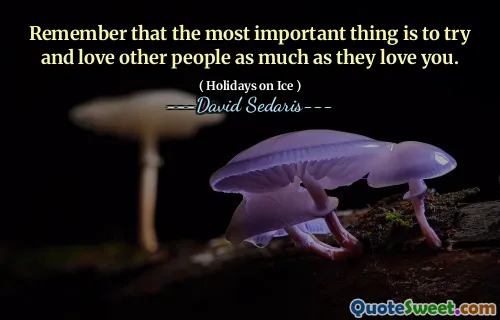Asking for candy on Halloween was called trick-or-treating, but asking for candy on November first was called begging, and it made people uncomfortable.
In David Sedaris's "Holidays on Ice," he explores the cultural differences in how Halloween is perceived versus the day after. On Halloween, children engage in the fun tradition of trick-or-treating, which is widely accepted and celebrated as a playful activity. This communal event allows kids to gather candy from neighbors, creating a spirit of festivity.
However, the narrative shifts when he contrasts this with the day after Halloween. When children ask for candy on November 1st, the same behavior is viewed as begging, leading to discomfort among others. This highlights societal norms and perceptions surrounding holidays and the activities associated with them, revealing how context significantly influences behavior and its reception.






